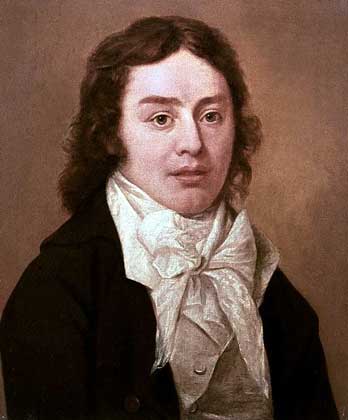The directory «Plots»
Coleridge Samuel Taylor
(1772–1834)

English poet and man of letters, b. Ottery St. Mary, Devonshire; one of the most brilliant, versatile, and influential figures in the English romantic movement.
The son of a clergyman, Coleridge was a precocious, dreamy child. He attended Christ’s Hospital school in London and was already formidably erudite upon entering Cambridge in 1791. His erratic university career was interrupted by his impulsive enlistment in the dragoons, from which his brothers managed to extricate him. In 1794 he met the poet Robert Southey, who shared his political and social idealism, and together they planned to establish a small utopian community, which they called a pantisocracy, on the banks of the Susquehanna River in the United States. The plan failed to materialize for practical reasons. In 1795 Coleridge married Sarah Fricker, the sister of Southey’s fiancée, with whom he was never happy. They settled in Nether Stowey in 1797, and shortly thereafter William Wordsworth and his sister Dorothy moved into a house nearby.
Although Coleridge had been busy and productive, publishing both poetry and much topical prose, it was not until his friendship with Wordsworth that he wrote his best poems. In 1798 Coleridge and Wordsworth jointly published the volume Lyrical Ballads, whose poems and preface made it a seminal work and manifesto of the romantic movement in English literature.
Coleridge’s main contribution to the volume was the haunting, dreamlike ballad “The Rime of the Ancient Mariner.” This long poem, as well as “Kubla Khan” and “Christabel,” written during the same period, are Coleridge’s best-known works. All three make use of exotic images and supernatural themes. “Dejection: An Ode,” published in 1802, was the last of Coleridge’s great poems. It shows the influence of (or affinity to) some poetic ideas of Wordsworth, notably the meditation upon self, nature, and the relationships among emotion, sense experience, and understanding. His Confessions of an Enquiring Spirit (ed. by his nephew H. N. Coleridge) was published posthumously in 1840.
While an undergraduate Coleridge had begun to take laudanum (an opium derivative then legal and widely used) for his ailments, and he was addicted by about 1800. That year, after having traveled with Wordsworth in Germany, Coleridge moved with his family to Keswick in the Lake District. He continued his studies and writings on philosophy, religion, contemporary affairs, and literature. In 1808 he separated from his wife permanently, and from 1816 until his death he lived in London at the home of Dr. James Gilman, who brought his opium habit under control.
Malta, 1990, Samuel Coleridge
Sierra Leone, 1996, Ancient Mariner